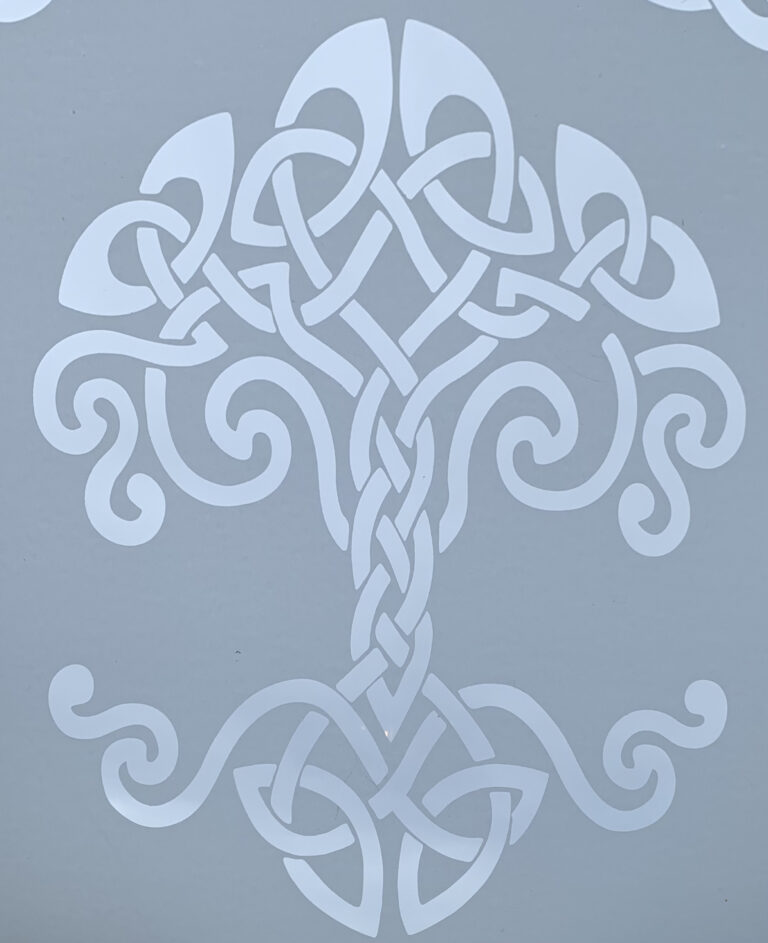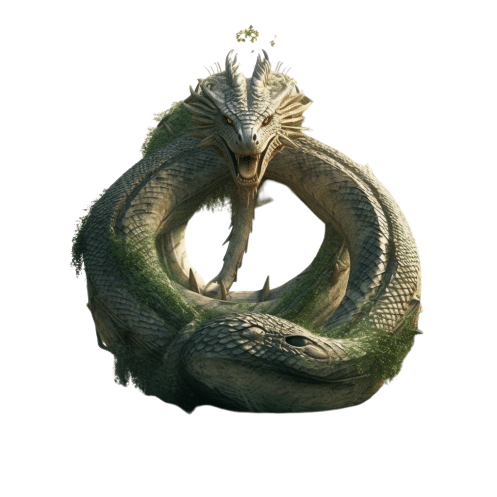Viking Oath Rings: Arm Bracelets and Oath Taking in Viking Culture
If you have leafed through the pages of the Poetic Edda, or the Prose Edda, then you are familiar with the Viking period concept of binding. Binding was an important theme during the Viking Age, and an important part of Viking culture. We see this theme represented in images and written form. Viking mythology has many images of gods and monsters bound by magical fetters. There are tales of knots that are bound so tightly they cannot be undone. The Norns bind fate by weaving the threads of existence, and oaths, throughout the Viking worlds were sworn on the Viking Oath Rings (Norse arm ring or Viking arm ring). Keep reading to learn more about the symbolism of the ring. (For more information on Viking Symbols check out this post on Viking Symbols and their meaning.)
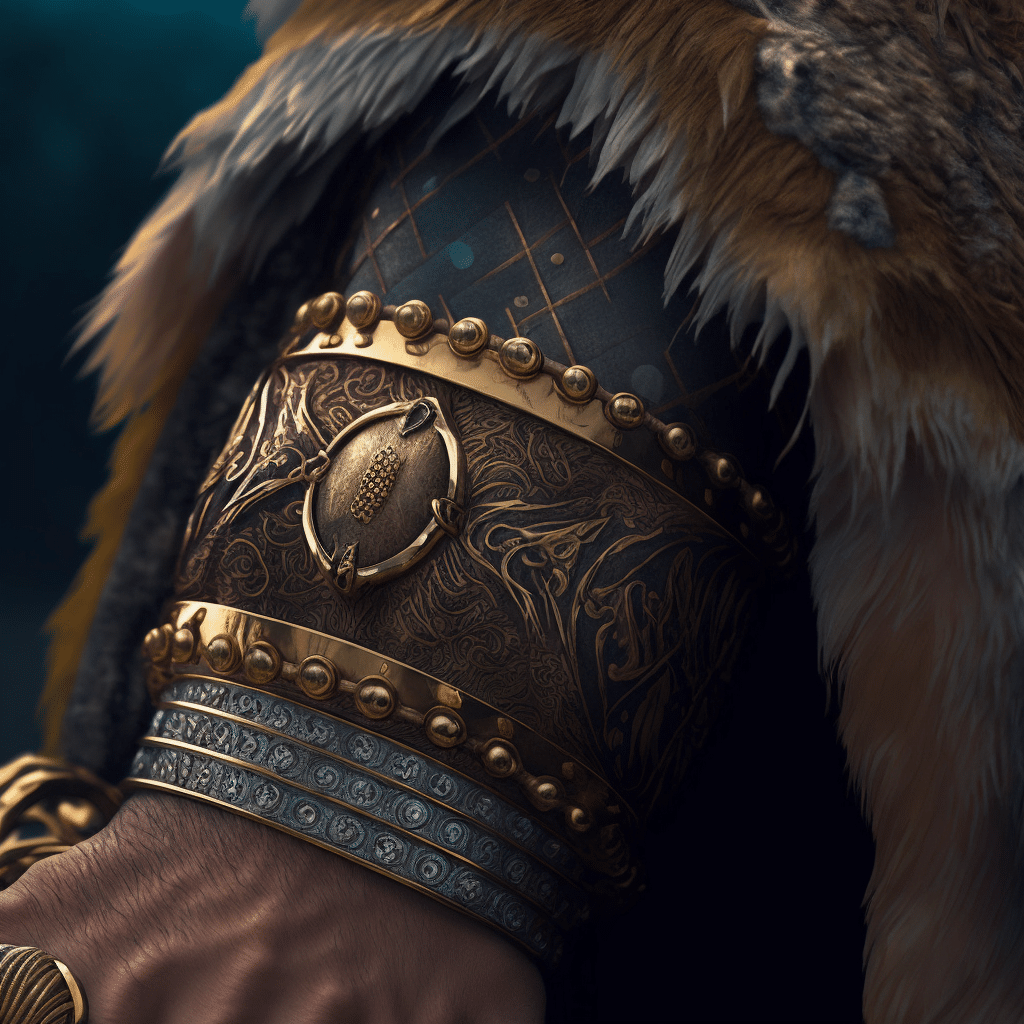
Arm Bands and Oath Rings in Archaeological Digs
Archaeological digs have uncovered arm bands, or arm rings. These rings are often interpreted as expression of leadership and social rank. This has also led to rings being associated with oaths, ergo the Viking Oath Ring. The “swearing of a ring oath” has a connection to the God Ullr which we will touch on in a minute.

History of the Ring and Oath Taking
While it is sometimes hard to figure out every move of the Norse people who lived over 1000 years ago, we can look to their neighbours for clues. There is an established history of rings being connected to oaths and pacts that can be found in historical sources. This lends credence to the belief that the Vikings may have sworn oaths to leaders on these rings. This would also make them a sign of wealth, and social status within Viking society.
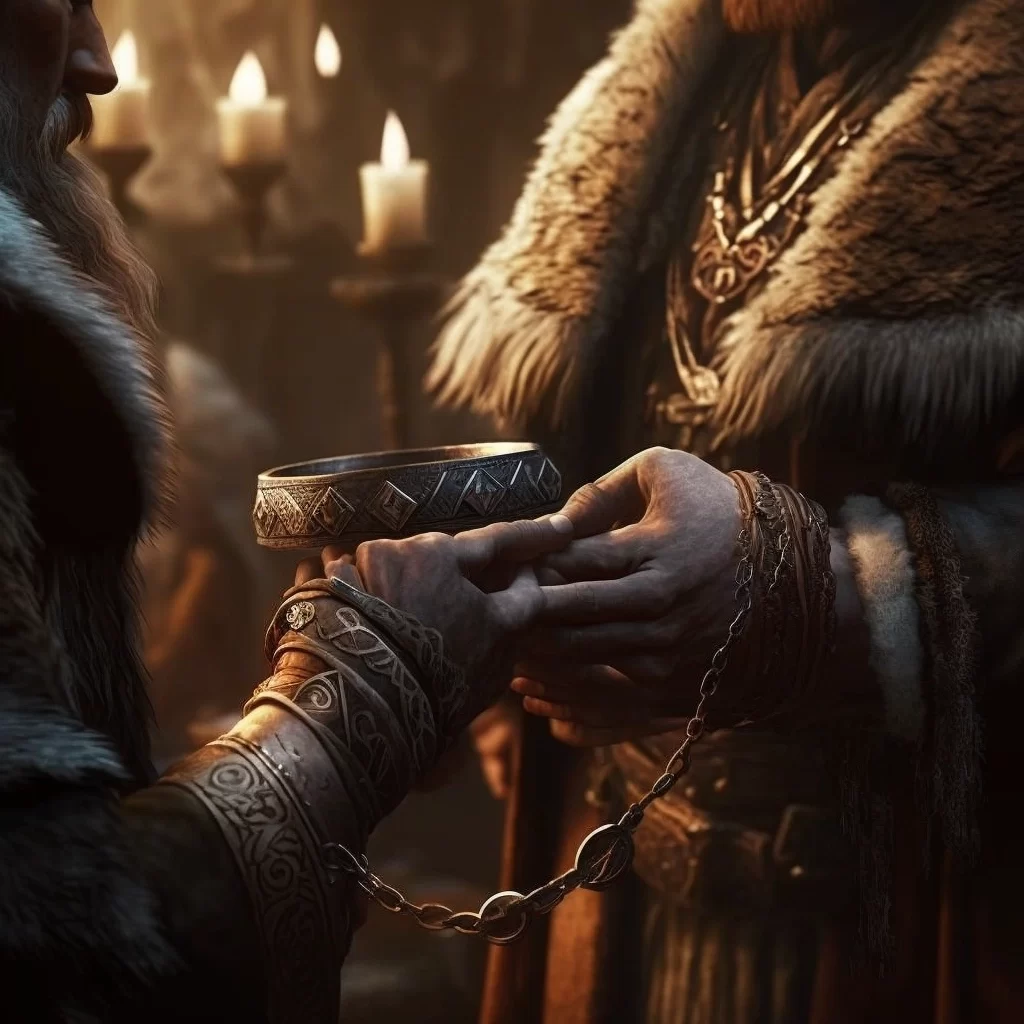
There are various mentions of Oath Rings found within the Viking Sagas. In Eyrbyggia Saga a ring is described as being displayed on a stall in the midst of the floor. It states that on the stall “thereon lay a ring…on that all men must swear all oaths”.
Outside Sources Supporting Ring Oaths
There is also mention of an oath ring in the Anglo-Saxon Chronicle. We hear of King Alfred making peace with a massive Danish Army that invaded Wareham in 876. The Vikings swore an oath on the “sacred ring”, which is sometimes also translated as “bracelet”. The possibility of dual translations also backs up the idea of an arm ring, which might be given in an oath taking ceremony. We have certainly seen this idea adopted by modern Vikings, and popular culture. We often see a scene where Vikings gather in a great hall and swear allegiance to a leader.

Loyalty and Gift Giving
The powerful chieftains often present them with an arm ring, which is a tangible object that displays that oath. It is an important part of Viking culture to be seen as the dispenser of gifts. These special rings could be given within heroic society to celebrate your own brave deeds. If you returned from a successful raid you might be given a sacred ring, a pair of arm-rings, silver pieces, etc. The piece of jewelry would be a symbol of wealth. It could be made of precious metals like gold or silver, or perhaps copper.
Sounds a lot like a wedding ring, which also swears allegiance and on which oaths are exchanged.
The Norse God Ullr seems to be the most closely associated with oath rings. We do not know a ton about this particular God, but the surviving references to Ullr, such as his mention in Atlakvida, oaths are sworn by various places and objects, including over “Ullr’s ring”.
The Gods Connection to Ring Oaths
The All-Father, Odin, is also mentioned as having sworn an oath on a ring. In Havamal 108, Odin is described as swearing a “ring oath”. To find out more about Odin and his symbols in Norse Mythology check out:
Odin’s Ravens: Huginn and Muninn
Odin’s Valknut Symbol
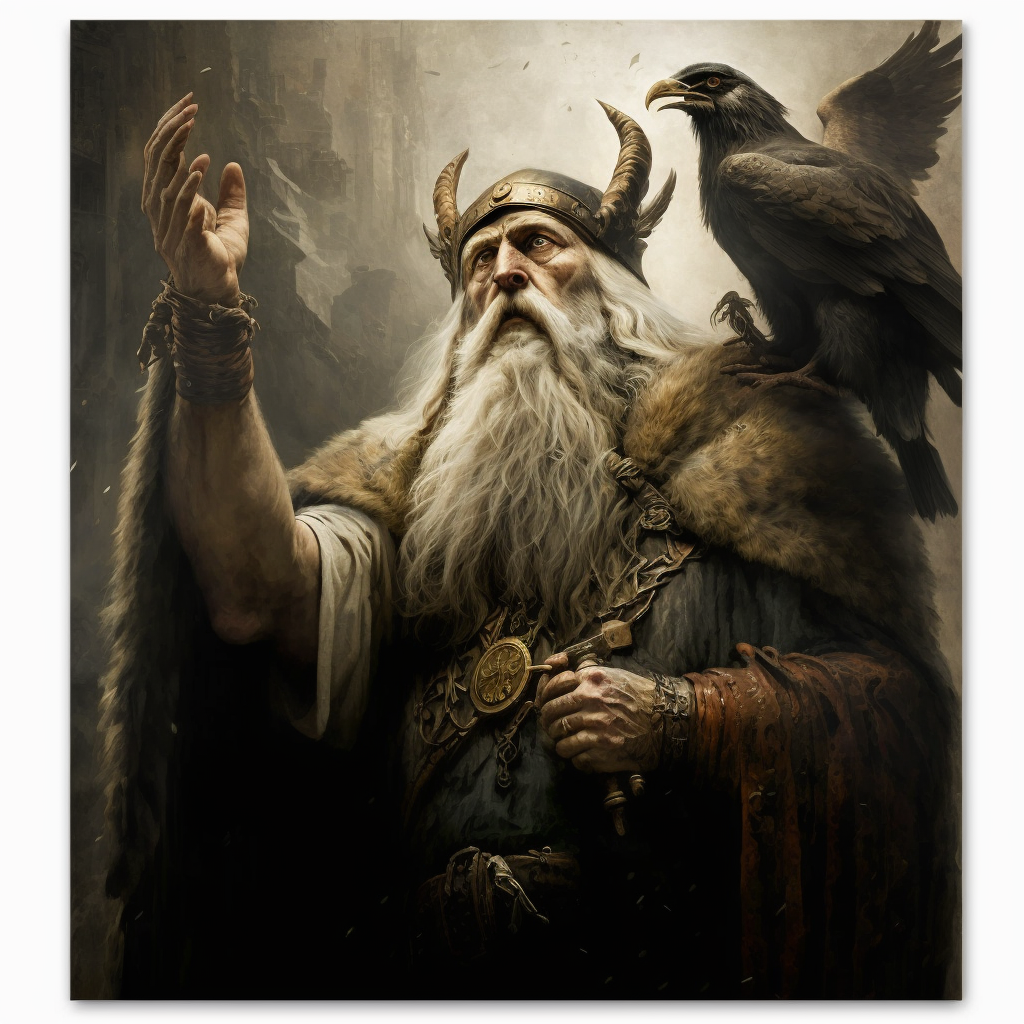
We sometimes find amulet rings at dig sites and these are thought to be connected to Ullr. They are also sometimes connected to the Goddess Freya and believed to be a symbol of fertility possibly used in rituals.
The Ring Used in Other Forms
There is thought to be some continued association of a sacred ring being an object upon which we may swear an oath. Church doors sometimes had large ring handles, and there are mentions in the 9th to 14th centuries of oaths being sworn on the church door ring. These were sacred places where oaths were often sworn, disputes settled, and legal acts decided.
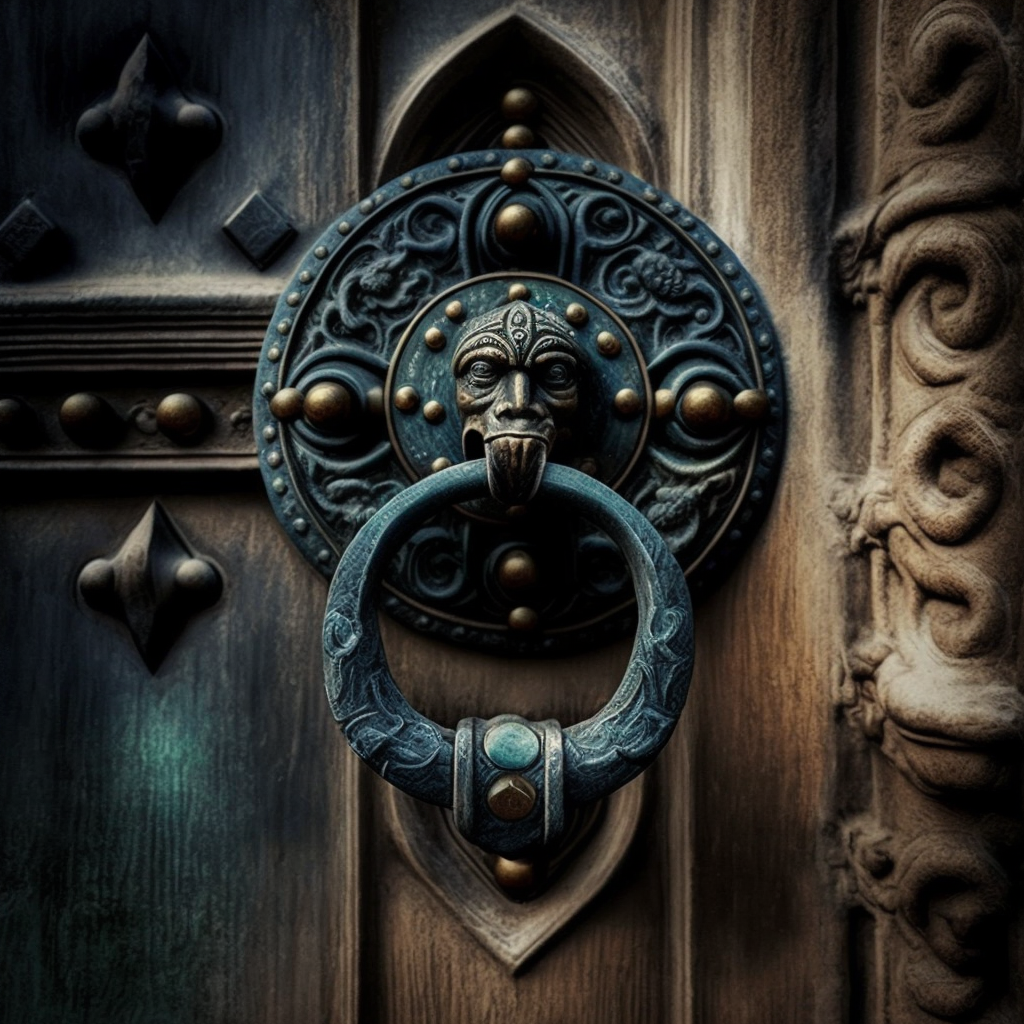
The ring of course exists in legends such as the round table of King Arthur. There is an everlasting idea, much like the wedding ring, that it is infinite, with no beginning and no end. It lends itself therefore, rather easily to swearing an oath of unwavering loyalty to a king or lord. It is also a peaceful symbol, particularly when we hear it in the Arthurian legends. There is no master at his table. It is a symbol of equality, and therefore peaceful existence.
Evidence Suggests they Might have Existed
I think it’s fair to say that there is enough evidence to suggest that swearing an oath as a sign of loyalty played an important role in Norse mythology and Viking society. Oath rings, which are sometimes represented as Viking bracelets worn on the upper arm likely existed in some form in the Viking Age. The Eddic Poetry mentions oath rings, but we have to keep in mind that these were mainly written in the 13th century. By this time Christianity had taken over the land and sources were harkening back to a remembered history at best. There are, however, enough surviving sources outside of the Viking Age, to back up the claim that oath rings existed and were used.
Oaths relied on the belief that the Gods, and that things invoked in the process, would take vengeance on the oath-breakers. Belief was strong during the Viking Age, so it’s also likely, and common in religious communities to involve the Gods/God in swearing truths. We still see this all the time when modern day Christians swear over a Bible. Archaically, we also still see this in many courts of law when you are asked to place your hand on a bible and swear to “tell the truth, the whole truth, and nothing but the truth.” The ritual of oath swearing over objects has survived to this day.

The Eddic Prose actually shows that oaths were sworn over more than just rings. There is also mention of stones being used to swear oaths. History of the Gothic peoples asserts that oaths were more commonly sworn on weapons. What is difficult to discern is to what extent these oaths were actually applied in real-life situations.
Various Oath Taking Objects
It isn’t too far of a stretch to understand both weapons, and rings being used as oath-taking objects. The ring being binding and forever certainly denotes loyalty. The weapon, having been infused with the powers of the Gods invoked during the oath-taking ritual might turn that weapon against its user if he breaks the oath.
However, the biggest issue here, which throws a wrench into the idea of oath rings is Christianity. Sure they are mentioned in the saga literature, but that was written during the time when Christianity had become the dominant religion in the land. The Christians definitely have an established history of swearing oaths on their bible, and on crosses, or relics, etc. So some scholars also argue that putting oath rings into the literature is just their way of expressing oaths during the Viking Age.
Check out some evidence based research that argue both sides:
https://www.torrossa.com/en/resources/an/4914668#page=84
https://bioone.org/journals/journal-of-the-north-atlantic/volume-8/issue-sp8/037.002.sp811/Performing-Oaths-in-Eddic-Poetry–Viking-Age-Fact-or/10.3721/037.002.sp811.short
Are they just an Imagined History?
It could be that those writing the sagas in the 13th century knew nothing of Viking Age oath taking and breaking. They simply knew they couldn’t include a bible, and therefore had to substitute something in there.
Keep in mind that there are existing sources from outside Scandinavia, such as the Anglo-Saxon Chronicle mentioned above that do add some leverage in favour of oath-rings being real.
While there is plenty of mention of early Europeans swearing on weapons, Bibles, and other items, The Royal Frankish Annals state that “Danish magnates corroborated the peace agreement according to their own rights and customs”. They do not mention what they were, though we can assume they were clearly different than those being popularly used in the Carolingian realm.
They’ve Made their Way into Popular Culture
The idea of the Viking-oath-ring has stood the test of time. It is frequently seen in popular culture references to the Vikings, and you’ll definitely see it in the Television Series “Vikings”. I clearly remember a scene where male Viking children were being gifted their oath rings for swearing loyalty to a leader.
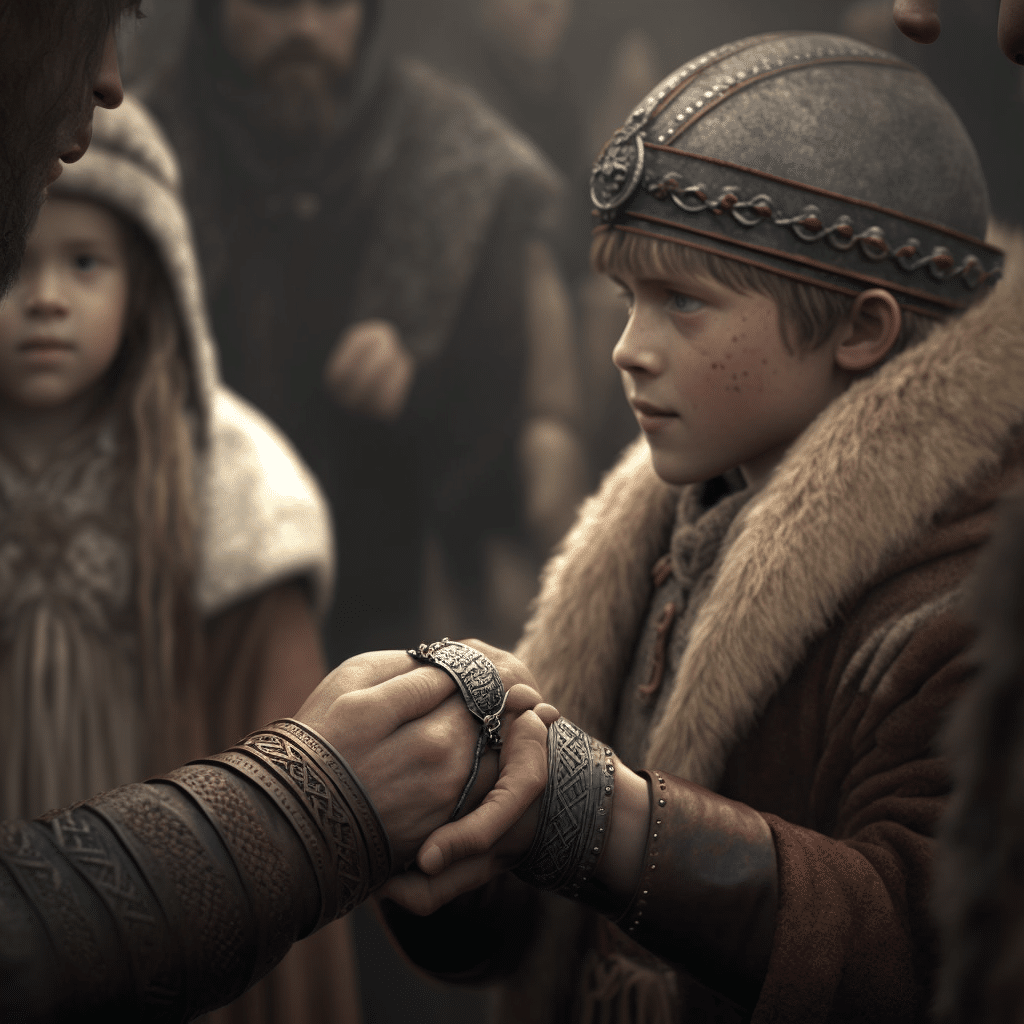
Modern day Vikings have embraced the idea, and you’ll see it included with a lot of Halloween costumes. Nordic jewelry is also pretty hot on the idea of arm bands and oath rings. You’ll find these arm bands, oath rings, or bracelets available with beautiful designs inspired by authentic Viking
Eriksen, M. H. (2014). The Powerful Ring. Door rings, oath rings, and the sacral place. Viking Worlds. Things, Spaces and Movement, 73-87.
Eriksen, M. H. (2014). The Powerful Ring. Door rings, oath rings, and the sacral place. Viking Worlds. Things, Spaces and Movement, 73-87.




